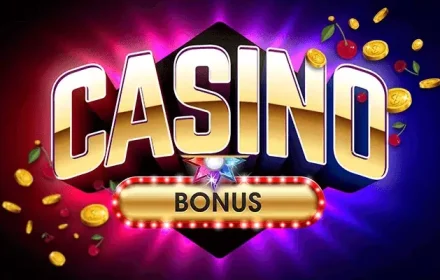The development of gambling entertainment in the Soviet Union followed a complex path, associated with strict restrictions, stringent laws, and complete state control.
The history of casinos reflects changes in the economy, ideology, and the government’s attitude towards the gambling business in the USSR. During different periods – from the 1920s to the late 1980s – the rules constantly changed: from a complete ban to the creation of state lotteries and partial legalization of certain forms of entertainment.

First steps: gambling in the 1920s
After the 1917 revolution, the new authorities declared a struggle against bourgeois habits, including card tables, roulette, and commercial casinos. Gambling in the USSR was seen as a vestige of the past undermining work ethics. In the early 1920s, massive repressions began against the owners of dens and underground establishments.
Nevertheless, part of the population continued to seek unofficial ways of entertainment. Illegal card games remained popular, and in major cities – especially in Moscow and Sochi – closed clubs for the party elite began to emerge. These processes laid the foundation on which the entire history of casinos in the USSR later developed.
State control and legalization of lotteries
By the mid-1930s, the leadership of the USSR realized that it was impossible to completely stop interest in gambling. The authorities decided to take control of the process by creating the first state lotteries. The most famous program was “Sportloto,” launched in 1970. Revenues from ticket sales were directed towards financing sports, culture, and social infrastructure.
Thus, in the conditions of strict ideology, partial permission for gambling entertainment emerged. However, this did not extend to roulette, poker, and other formats. Underground clubs continued to exist, and the police regularly cracked down on their activities. An important point – it was during this period that a special model began to take shape, which later defined how the entire history of casinos in the USSR unfolded.
Bans on gambling and underground gambling business in the USSR
Starting from the 1950s, the state intensified control over private establishments, aiming to completely eliminate illegal forms of entertainment. Any first casinos in the USSR opened without approval from the authorities were subject to confiscation, and the owners faced criminal liability.
However, the bans could not eradicate the interest in gambling. Hidden clubs emerged in major cities where bets were placed, card games were played, and experienced dealers were hired. Among underground players were professional cheaters who used mathematical systems and psychological tricks to deceive opponents. These events became an important part of how the history of casinos in the USSR developed and how society reacted to strict restrictions.
Underground dens and elite closed clubs
In the 1960s-1970s, the most active underground scene was forming in Moscow and on the Black Sea coast, especially in Sochi, which essentially became the center of illegal gambling business. Hidden establishments operated here, allowing only verified clients.
Closed clubs created an illusion of legality: professional dealers were hired, expensive poker and roulette tables were used, and security control was strict. Such organization allowed hiding activities even from the authorities, but the risks remained high. Such places made a significant contribution to the development of the underground sector, shaping a unique layer in how the history of casinos in the USSR was perceived.
List of key reasons for the casino ban
To understand the logic of the authorities, it is worth highlighting the factors that led to the restriction of the gambling business:
- instilling in citizens a desire for easy money and a departure from work ethics;
- the authorities’ desire to control financial flows by eliminating private incomes;
- the high popularity of underground dens and the need to strengthen supervision;
- ideological commitment to combat bourgeois lifestyle;
- issues with tax revenues from illegal establishments.
All these factors influenced how the history of casinos in the USSR was shaped and why the state controlled the market so strictly.
Sportloto, state monopoly, and mass culture
By the late 1970s, the only legal form of betting was state lotteries, including the legendary “Sportloto.” They were positioned as a social tool and advertised through newspapers, cinema, and television.
The programs popularized gambling in a controlled manner but did not completely replace traditional card games and other entertainment formats. Underground clubs continued to thrive, emphasizing the complexity of regulation and explaining why the history of casinos in the USSR unfolded so contradictorily.
How did the gambling business change by the 1980s?
By the end of the 1980s, the country’s economy was experiencing serious difficulties. The deepening crisis led to a partial liberalization of certain sectors, including the entertainment industry. During this period, discussions began about legalizing a limited number of establishments in major cities.
The first experiments with open gambling halls in the USSR appeared, but they existed within pilot projects and under full state control. These changes laid the groundwork for transitioning to new legislation after the collapse of the Union. This stage marks the conclusion of a key part of how the history of casinos in the USSR was shaped.
Popular forms of gambling entertainment
Despite the bans, some formats remained popular in Soviet society. The main ones included:
- underground card games among workers and intellectuals;
- roulette and poker in closed clubs of the party elite;
- state lotteries, including “Sportloto”;
- street bets and informal totalizators;
- unofficial slot machines in some regions.
The popularity of these entertainments demonstrates how contradictory the history of casinos in the USSR was, combining strict control and high public interest.

Conclusion: history of casinos in the USSR
The Soviet model of managing gambling entertainment was based on a combination of bans, strict control, and limited legalization of certain formats. Underground dens, elite closed clubs, official lotteries, and plans for partial liberalization created a complex and ambiguous picture.
An analysis of the industry’s development shows that the history of casinos in the USSR was not just a path of bans but also evidence of how society’s interest clashed with harsh government policies. These processes laid the foundation for transformations that occurred after 1991, when a new era of legal gambling business began in Russia!
 en
en  ru
ru  de
de  ar
ar  es
es  hi
hi  fr
fr  nl
nl  it
it  pt
pt  el
el 










